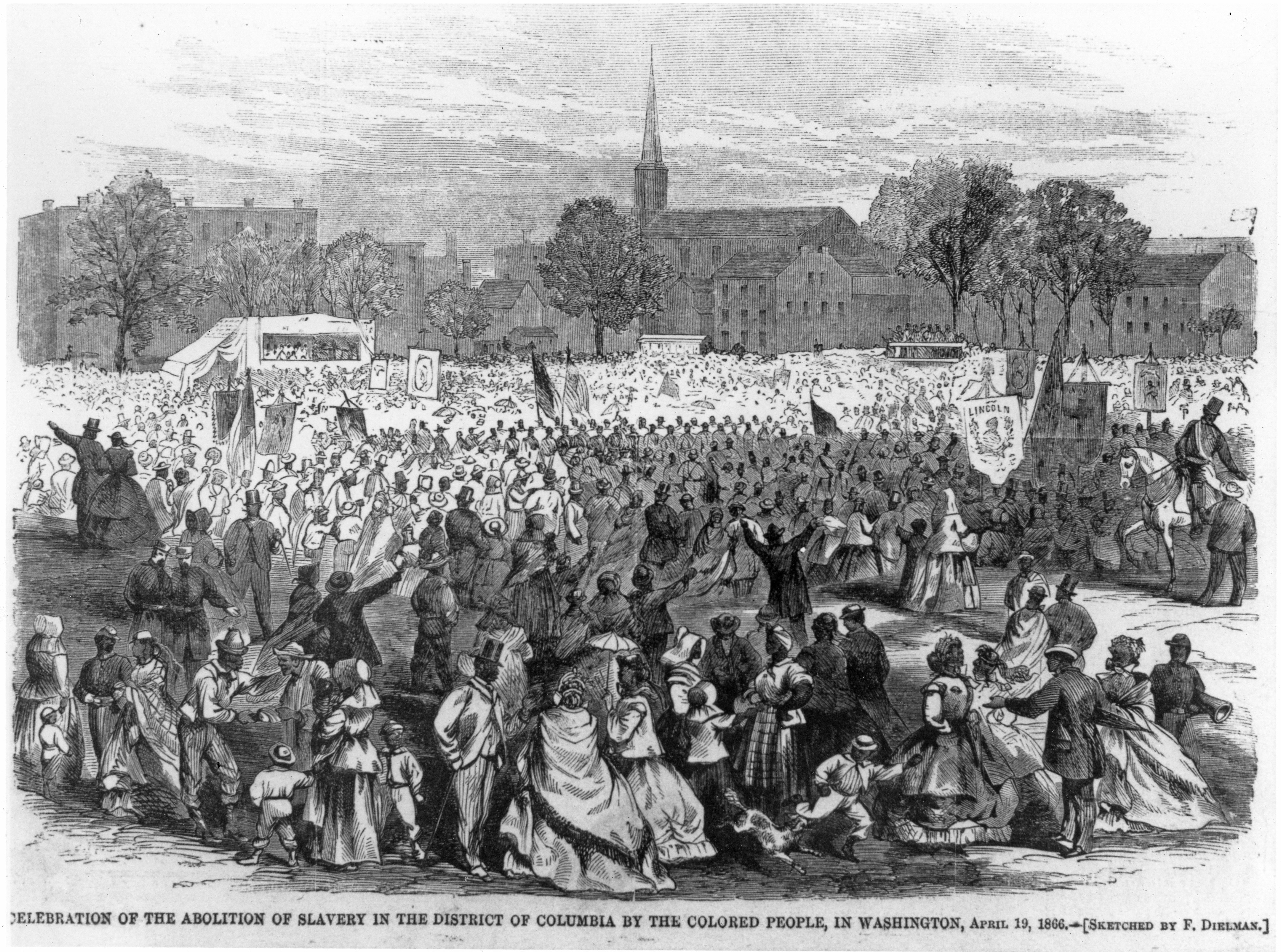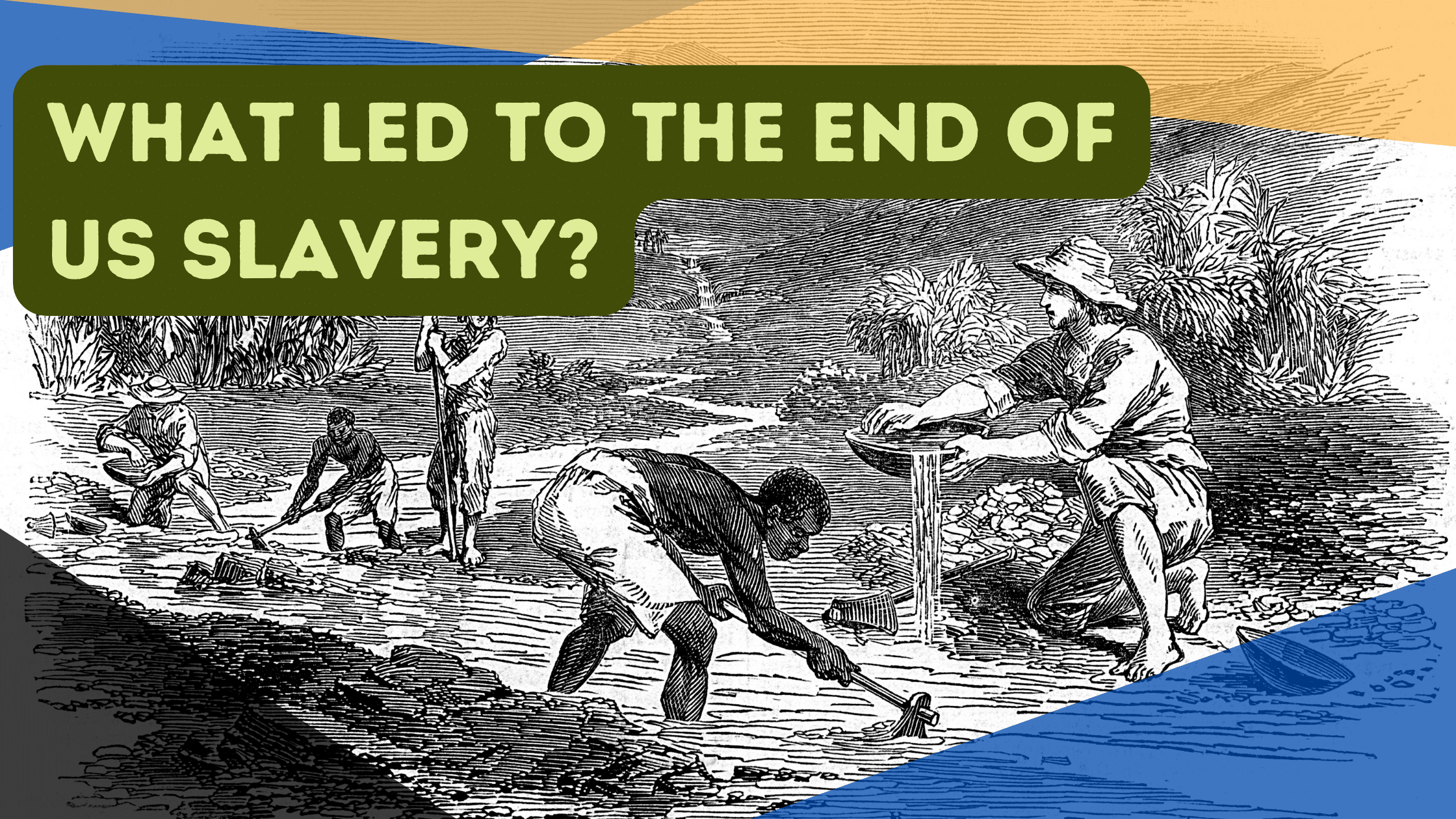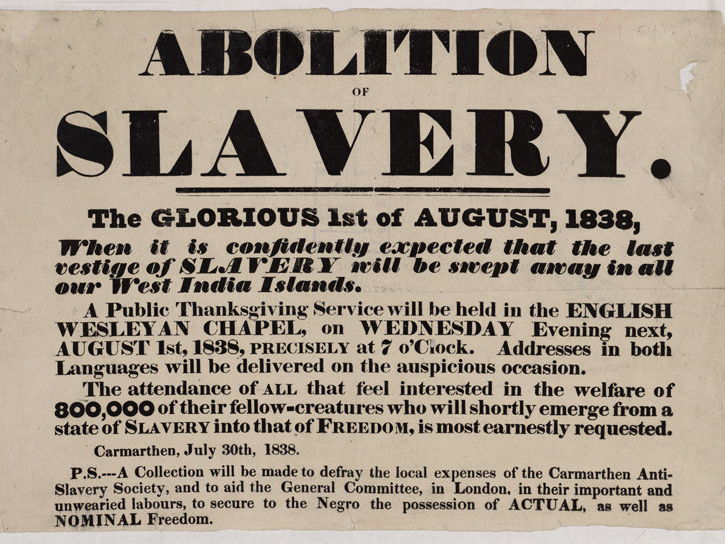When Was Slavery Abolished: A Comprehensive Timeline And Analysis
Slavery has been one of the darkest chapters in human history, with its abolition marking a significant turning point in the fight for human rights and equality. Understanding when slavery was abolished requires delving into the complexities of different countries, legal frameworks, and social movements that contributed to its end. This article explores the timeline, key events, and lasting impact of slavery's abolition across the globe.
From the United States to the British Empire, the abolition of slavery was a gradual process that involved significant political, economic, and social changes. It was not just a single event but a series of legal acts, protests, and international agreements that ultimately led to the eradication of this inhumane practice.
In this article, we will examine the history of slavery, its abolition in various parts of the world, and the legacy it left behind. By understanding the timeline and the efforts that led to the abolition of slavery, we can appreciate the progress made and recognize the work still needed to ensure equality and justice for all.
Read also:Unraveling The Mystery Of Heath Ledgers Death A Comprehensive Analysis
Table of Contents
- Introduction
- The History of Slavery
- When Was Slavery Abolished in the United States?
- Abolition in the British Empire
- Slavery Abolition in France
- The End of Slavery in Brazil
- Spain's Role in Abolishing Slavery
- A Global Perspective on Slavery Abolition
- The Impact of Slavery Abolition
- Modern-Day Slavery
- Conclusion
The History of Slavery
Slavery has existed in various forms throughout human history, dating back to ancient civilizations such as Greece, Rome, and Egypt. It was a system where individuals were treated as property, forced to work without pay, and subjected to inhumane conditions. The transatlantic slave trade, which began in the 15th century, saw millions of Africans forcibly transported to the Americas to work on plantations.
By the 18th century, the abolitionist movement began to gain momentum, with religious groups, intellectuals, and activists advocating for the end of slavery. This movement was fueled by moral, ethical, and economic arguments against the practice. Key figures such as William Wilberforce and Frederick Douglass played pivotal roles in raising awareness about the atrocities of slavery.
Key Facts About Slavery
- Estimates suggest that over 12 million Africans were forcibly transported to the Americas during the transatlantic slave trade.
- Slavery was legally recognized and institutionalized in many parts of the world until the 19th century.
- The economic impact of slavery was significant, with many countries benefiting from the labor of enslaved people in industries such as agriculture and mining.
When Was Slavery Abolished in the United States?
In the United States, slavery was abolished with the passage of the 13th Amendment to the Constitution in 1865. This amendment formally ended the practice of slavery and involuntary servitude, except as punishment for a crime. The abolition of slavery in the U.S. was the result of a long and arduous struggle, including the Civil War, which lasted from 1861 to 1865.
President Abraham Lincoln's Emancipation Proclamation in 1863 was a significant step towards ending slavery, as it declared that all enslaved people in Confederate-held territories were to be set free. However, it was not until the ratification of the 13th Amendment that slavery was officially abolished across the entire country.
Key Events Leading to Abolition in the U.S.
- 1820: The Missouri Compromise attempted to balance the power between slave and free states.
- 1857: The Dred Scott Decision by the Supreme Court declared that African Americans were not citizens and had no legal rights.
- 1863: The Emancipation Proclamation was issued by President Lincoln.
- 1865: The 13th Amendment was ratified, officially ending slavery.
Abolition in the British Empire
The British Empire played a central role in the transatlantic slave trade, but it was also one of the first major powers to abolish slavery. The Slave Trade Act of 1807 prohibited the trade of enslaved people within the British Empire, while the Slavery Abolition Act of 1833 ended slavery itself. This act came into effect on August 1, 1834, freeing over 800,000 enslaved people in the Caribbean, Mauritius, and South Africa.
Key figures such as William Wilberforce and Thomas Clarkson were instrumental in pushing for the abolition of slavery in Britain. Their efforts were supported by a growing public movement that highlighted the moral and ethical issues surrounding the practice.
Read also:Martin Dugger Funeral Home Obituaries A Comprehensive Guide To Honoring Lives
Impact of Abolition in the British Empire
- The abolition of slavery led to significant economic changes, as the British economy shifted away from reliance on slave labor.
- Formerly enslaved people were granted freedom but faced significant challenges in integrating into society.
- The British government paid compensation to slave owners, rather than the enslaved individuals, which remains a controversial decision to this day.
Slavery Abolition in France
France abolished slavery twice in its history. The first abolition occurred in 1794 during the French Revolution, but slavery was reinstated by Napoleon Bonaparte in 1802 to support the French economy. It was not until April 27, 1848, under the leadership of Victor Schœlcher, that slavery was permanently abolished in all French territories.
Schœlcher, a prominent abolitionist, played a crucial role in advocating for the end of slavery in France. His efforts were supported by a growing abolitionist movement that emphasized the moral and ethical imperatives of ending the practice.
Challenges Faced in Abolishing Slavery in France
- Napoleon's reinstatement of slavery was driven by economic interests, particularly in the sugar-producing colonies.
- Abolitionists faced significant opposition from plantation owners and other vested interests who benefited from the system.
- Despite the abolition of slavery, former enslaved people often faced discrimination and economic hardship.
The End of Slavery in Brazil
Brazil was the last country in the Americas to abolish slavery, with the Golden Law (Lei Áurea) being signed on May 13, 1888. This law ended the practice of slavery in Brazil, freeing over 1.5 million enslaved people. The abolition of slavery in Brazil was influenced by a combination of factors, including international pressure, economic changes, and the growing abolitionist movement.
Princess Isabel, acting as regent in the absence of Emperor Pedro II, signed the Golden Law, marking a significant moment in Brazilian history. However, the abolition of slavery did not immediately lead to equality, as many formerly enslaved people struggled to find work and integrate into society.
Key Factors Leading to Abolition in Brazil
- International pressure from countries such as Britain, which had already abolished slavery, played a role in influencing Brazil's decision.
- The decline of the coffee industry, which relied heavily on slave labor, contributed to the economic feasibility of ending slavery.
- Abolitionist movements, both within Brazil and abroad, raised awareness about the injustices of slavery.
Spain's Role in Abolishing Slavery
Spain abolished slavery in its colonies at different times, depending on the region. In Puerto Rico, slavery was abolished on March 22, 1873, while in Cuba, it was abolished on October 7, 1886. The abolition of slavery in Spanish territories was influenced by both internal and external factors, including economic changes and international pressure.
Key figures such as Antonio Maceo and José Martí played important roles in advocating for the end of slavery in Cuba. Their efforts were part of a broader movement for independence and social justice in the Spanish colonies.
Challenges in Abolishing Slavery in Spanish Colonies
- Plantation owners and other vested interests resisted the abolition of slavery due to its economic importance.
- Abolitionists faced significant opposition from those who benefited from the system.
- Formerly enslaved people often faced discrimination and economic hardship after gaining their freedom.
A Global Perspective on Slavery Abolition
While the abolition of slavery occurred at different times in different parts of the world, it marked a significant turning point in human history. The global movement against slavery was driven by a combination of moral, ethical, and economic arguments. International agreements, such as the United Nations' Universal Declaration of Human Rights, have further emphasized the importance of ending all forms of slavery and involuntary servitude.
Despite these efforts, modern-day slavery still exists in various forms, including human trafficking, forced labor, and child labor. Addressing these issues requires continued vigilance and cooperation at both the national and international levels.
Modern-Day Efforts to Combat Slavery
- Organizations such as the International Labour Organization (ILO) and the United Nations work to combat modern-day slavery through awareness campaigns and policy changes.
- Governments and NGOs collaborate to provide support and resources to victims of modern-day slavery.
- Technological advancements, such as blockchain and artificial intelligence, are being used to track and prevent human trafficking and forced labor.
The Impact of Slavery Abolition
The abolition of slavery had far-reaching consequences, both positive and negative. On the positive side, it marked a significant victory for human rights and equality. Formerly enslaved people were granted freedom and the opportunity to pursue better lives. However, the transition to a post-slavery society was often fraught with challenges, including economic hardship, discrimination, and social inequality.
Abolition also led to significant changes in the global economy, as countries shifted away from reliance on slave labor. This transition was not always smooth, and many former slave-owning nations faced economic difficulties as they adapted to new systems of labor.
Legacy of Slavery Abolition
- The abolition of slavery laid the groundwork for future civil rights movements and the fight for equality.
- It highlighted the importance of international cooperation in addressing human rights issues.
- Despite progress, the legacy of slavery continues to impact societies around the world, particularly in terms of racial inequality and economic disparities.
Modern-Day Slavery
While the legal abolition of slavery has been achieved in most parts of the world, modern-day slavery still exists in various forms. Human trafficking, forced labor, and child labor are just a few examples of the ways in which individuals are exploited for profit. According to the International Labour Organization (ILO), approximately 40 million people are victims of modern-day slavery globally.
Tackling modern-day slavery requires a multi-faceted approach that includes legal reforms, economic development, and social awareness. Governments, organizations, and individuals must work together to address the root causes of slavery and provide support to those affected by it.
Key Strategies to Combat Modern-Day Slavery
- Strengthening laws and enforcement mechanisms to prevent and punish human trafficking and forced labor.
- Promoting economic development and education to reduce vulnerability to exploitation.
- Raising awareness about the issue of modern-day slavery and encouraging individuals to take action.
Conclusion
The abolition of slavery was a monumental achievement in the fight for human rights and equality. By understanding when slavery was abolished and the factors that contributed to its end, we can appreciate the progress made and recognize the work still needed to ensure a fair and just society for all.
We encourage readers to reflect on the history of slavery and its abolition, and to take action in combating modern-day slavery. Whether through supporting organizations that work to end exploitation or advocating for policy changes, every effort counts in the fight for human dignity and freedom. Share this article with others to raise awareness and join the conversation about the ongoing struggle for equality and justice.


